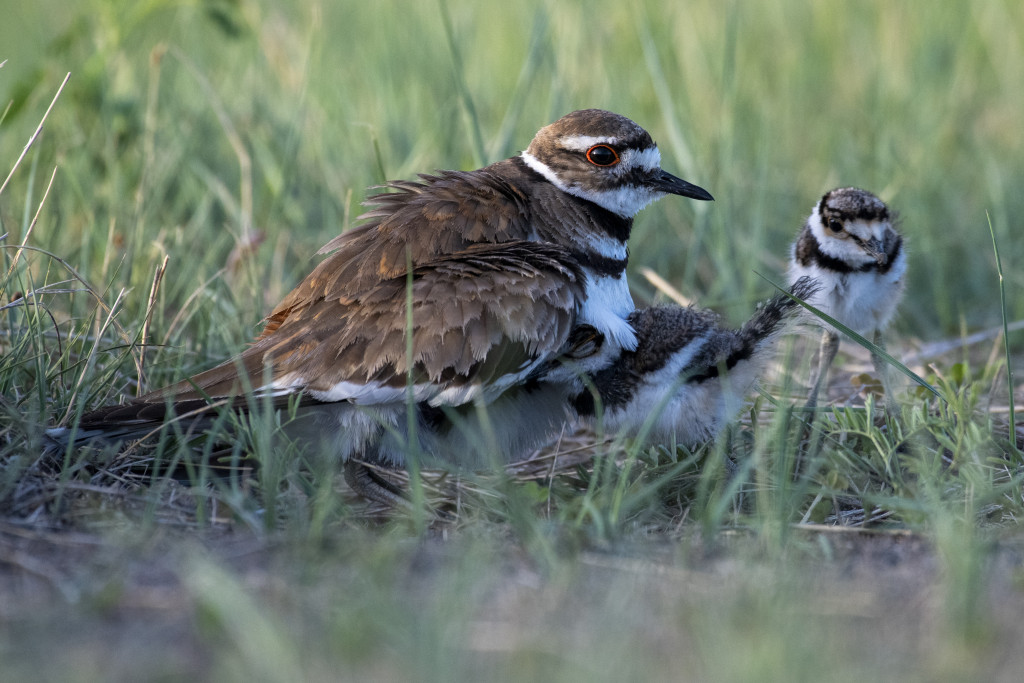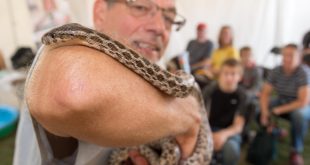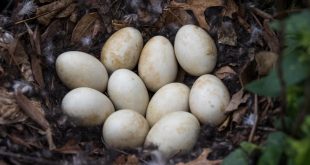Enlarge

Photo by Justin Haag
By Joel Jorgensen, Nongame Bird Program Manager
Plovers are generally a group of shorebirds that typically go unseen by the average person. Mountain and piping plovers are both rare and state threatened with specific habitat requirements. Other species like the black-bellied and semipalmated plover occur briefly in our state during spring and fall migration as they travel between breeding and wintering sites. Of Nebraska’s seven species of plovers, the killdeer is the only frequently encountered member of the group and also happens to be the only one that does not have “plover” in its name.
The robin-sized killdeer is ubiquitous and often obvious because it is often heard before seen. They are not only among the most vocal of all shorebirds, but it is safe to say they are also among the most vocal of all our birds. Their call has been described as a shrill wail and is how this species got its name because it superficially resembles the phrase “kill-deeer.” Its namesake is not because of any pent-up hostility toward antlered mammals.
Unlike other plovers, killdeer is flexible in the habitat it uses. While it is a shorebird and routinely occurs along shorelines, it is just as likely to be found in agricultural fields, golf courses, ballfields and just about any large open area with bare ground or very short vegetation.
Killdeer place their nest on the ground and have a propensity for favoring sites with some gravel, such as the edges of parking lots and even gravel rooftops. Often nests are near areas of human activity, and killdeer have no problem letting human interlopers know their presence is not appreciated.
If a person or other potential predator approaches too close to its nest, killdeer is one species that will cleverly behave as though it is injured. An adult bird will pretend to have a broken wing to appear like easy prey, fiendishly luring an intruder away only to fly away once the nest is no longer at risk of being plundered.
Killdeer are among the earliest-arriving migratory birds in spring with the leading arrivals crossing into Nebraska by early March and sometimes even by late February. After their breeding season wanes in mid- to late summer, birds gather in flocks at wetlands, river sandbars and areas where vegetation is kept nice and short by mowers in late summer and fall. Almost all killdeer spend the winter south of Nebraska, but a handful regularly winter downstream of Lake McConaughy where water management and river modifications provide open water even during the coldest of weather.
Whatever the season, the killdeer is our most familiar plover.
 Nebraskaland Magazine
Nebraskaland Magazine


